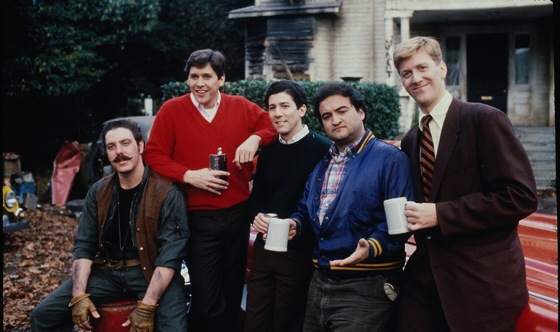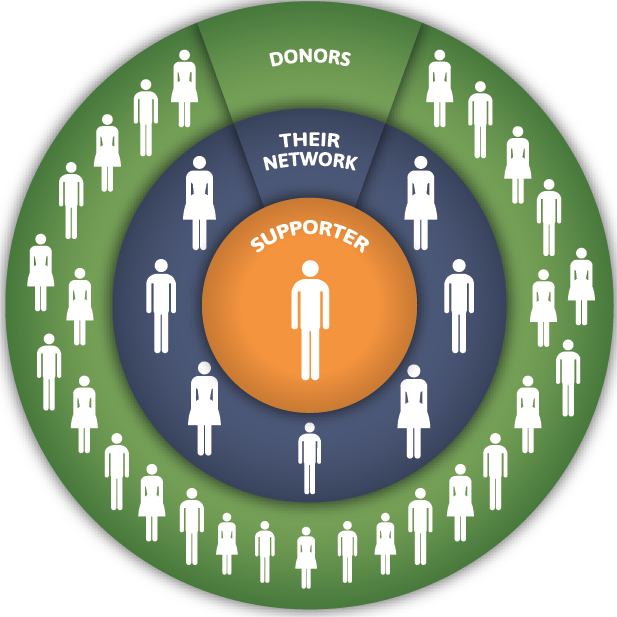
We are nearing the financial year end for many nonprofit organizations, and maybe things are going to work out fine and you will make budget. Perhaps you will even produce one of those modest nonprofit surpluses that will make everyone feel good, with being so much that it would raise any eyebrows in the community. It is unlikely to be enough to enable you to truly reinvest in your mission at the level necessary.
Maybe, though, you are going to have a deficit this year. Is it a one-off freak event or do you sense a gradual softening of your fundraising?
In the world of food banking and emergency food provision we rode a wave of recession-based fundraising from 2008 to 2012 that was based on general recognition that doubling down on core services was a necessity that had to take priority over funding the opera or saving the snowy plovers.

Those days are over. The problem is that the recovery is job-lite, and a growing number of the people who access our services are food insecure families with at least one breadwinner trying to piece together a living from a handful of part-time, low-pay, no-benefit jobs.
Nevertheless, many donors have become bored with the recession, and they want to move on. Now, they could be whistling opera arias while they feed the snowy plovers, rather than tapping their toe to a Woody Guthrie number and making sure that no American goes hungry. Many foundations have already moved on from a posture of feeling obligated to focus their resources on ‘urgent needs’ of a recession.

I have touched on the challenges of the current fundraising environment in this column before, typically by encouraging you to ‘sell a new bill of goods’ to your donors (such as nutrition and food literacy; or food banks as preventive health institutions; or as community development engines). These newer ‘cure not band aid’ activities are designed to work symbiotically with the previous singular focus of hunger relief.
However, in this post, I want to encourage you to consider a more permanent shift in how you approach the entirety of your fundraising and development.

Walk down the hall to look at your fundraising person or staff or department. However many, or how wonderful they are, they are NOT going to be able to succeed in providing the level of funding truly needed for you to succeed at your stated mission.
I’m sorry to be the bearer of bad news, but they cannot do it alone.
It requires everyone on the payroll and also everyone with links to your organization to have a ‘resource acquisition’ mentality, which is something different from simple ‘fundraising,’ and I hope to make this distinction clear.
When nonprofit leaders swap notes about fundraising, we usually gravitate to chit-chat about direct mail vs. events vs. online vs. this or that. We get hung up on the tactical tools rather than focusing on the types of shift in strategic approach that will enable us to succeed.
The good news is this strategic approach requires you to focus heavily on only two things:
1. Building and maintaining diverse relationships in the community;
2. Having the technology and dynamic internal communications/culture to assemble and actively disseminate the latest information about those relationships to all staff.
That’s it, folks. Focus all your energies and staff on these two issues and your organization will be sustainable in the long term. (Assuming, of course, you are the right people doing the right thing at the right time for your community)

So how do you do what I am suggesting? Let’s take a look at a group of people who are doing them already – people who are raising money for institutions of higher education. You’ve seen them at airport hubs in shorts and a suit jacket, modern day bounty hunters, tracking down their prey. These gift officers put incredible focus on steadily building relationships and joining the dots between a complex net of interconnected people. Of course, they start with an advantage, that they have a finite group of ‘prospects’ with a common interest related to a shared past experience of their glorious alma mater. (And even if that experience was plain bad, the fundraiser knows that they can give it a decade or two and rely on the golden glow-generator of memory to make that graduate positively inclined towards the institution. Or maybe just call it Stockholm Syndrome!)
A human services nonprofit needs to build a similar kind of shared experience with its large number of potential supporters in ways both large and small. Foodbank of Santa Barbara County’s Impact Group approach to focused service provision is already generating new communities of interest (and communities of resource development) for us, around shared interest areas like nutrition or diabetes care or poverty or through targeting specific geographical areas of highest need in our service area.
We seek to involve people beyond the ‘twanging heart strings’ level of financial support, because we want to directly connect people to an area of their on-going interest:
“The Foodbank are interested in optimum nutrition and exercise? So am I!
The Foodbank is working to provide special support to those with diabetes? I’ve got an aunt with diabetes!
The Foodbank is bringing special focus to build collaboratives to address poverty in a particular part of town? That’s the part of town my family pulled themselves out of, or that’s the part of town that I could make a lot of money long-term by investing in at the ground floor!
The list goes on and on and on. Everyone who supports us is interested in ameliorating hunger, but most are interested in so much more; in things that are ‘stickier’ than solely hunger, the perception of which will ebb and flow with (skewed or otherwise) perceptions of the local situation.
If we can engage people long term in a positive change area, then this is going to garner us far more sustainable resources to help us achieve our mission of building healthy communities through good nutrition.

Technology can help us achieve this, because we can source new types of information on people and compare links between large amounts of data. We can utilize a cheap (or theoretically free to nonprofits) CRM (Constituent Relationship Manager) like Salesforce or spend lots of money on Raiser’s Edge or any of the other IT solutions out there. It doesn’t really matter what you use as long as you are aggregating and linking all that data, and taking all of those relationships seriously.
This demands that we bring a high level of sophistication and focus to fundraising efforts over a wider level of dollar donation, whereas before, this was only the purview of the major gift level. I am sensing the need for us to flatten out how we treat small scale and large-scale contributors to our organizations. People want more information, more access. We have to find ways of doing it that don’t suck us dry of time and money.
Clearly, it is not cost effective to spend hour upon hour of staff time to build a relationship with a very chatty $25 donor, which is why social media and utilizing groups of community supporters acting as a conduit, becomes vitally important. You might also be pleasantly surprised to discover that the contractor who gives you $25 at Christmas is one degree of separation away from the wealthy person who favors that contractor for the job of moving the west wing of their house to the east wing or whatever the current priority is.

Perhaps at this stage of the discussion, you might acknowledge the potential benefits of focusing on relationship building and mapping, but how do you make it happen with a staff that is already stretched tighter than Simon Cowell’s face?

I have talked in previous posts of the potential upside of moving, however painfully, towards an employment model where everyone you hire is a leader or potential leader – whether they ride a desk or a forklift. Their job is to inspire, guide and when needed, manage the work of a shifting group of human resources that are paid ‘other than with money.’
This enables everyone in the organization to scale the impact they could achieve on their own. They work with volunteers, community leaders (super volunteers), knowledge philanthropists and interns.
For this to work, processes need to be simplified and automated, online training needs to be provided for tasks, and we need the ability to break down complex tasks into smaller discrete sub-tasks which can be taken on by those with only a modest amount of time to commit to the organization. The upside for employees of this kind of ‘outside-in’ organization is that they will be become better paid.
If this wasn’t confronting and challenging enough by itself, I am further suggesting that you need to up the ante by insisting that all staff be tasked with bringing resources into the organization as well. (And be rewarded for doing so).
However small your staff is, they have between them relationships with the people who have the relationships with the people that are waiting to be inspired and actively engaged in your mission, and which will bring it the sustainability of funding that it needs to succeed. You just need to give staff the confidence, permission and motivation to start to grow and link those relationships.
I’m afraid this involves more of that indigestion-provoking medicine called ‘culture change’ and the kind of cross-functional teams and situations that can get people talking and sharing what and who they know.
This now brings us to considering the distinction that I drew earlier, when I said it was more a question of getting staff, board and volunteers to understand that what we are asking of them is not ‘fundraising,’ but ‘resource acquisition’ which is different. The more introverted members of your team can be reassured that ‘resource acquisition is far less scary and embarrassing than fundraising.
It is not asking your friends for money. REPEAT. It is not asking your friends for money.
Rather it is building a matrix charting the varying resource needs of the organization alongside the different interest/involvement areas that your organization provides, and then to begin to join the dots themselves about who they know who might be interested in what area.

This kind of culture change also involves tasking staff who come to you with great idea for a new initiative with getting involved in generating the resources to put that initiative into action.
To which they reply: Wait, isn’t it the development department’s job to come up with the money to make my initiative a reality? I mean I can work up a budget or something, but the development director needs to schmooze some people and write some begging letters, because that’s their expertise, right?

It is their job, however it is also the job of the employee with the lightbulb over their head. Again it is a question of breaking down the elements of this initiative into chunks of people, things and money. We can’t afford to pay for everything ourselves, because that would be hogging all the fun, right? So where are new resources for each of these chunks out there in the community, which are laying in the hands of people who are waiting for the opportunities that their social investment in you will bring them, their employers, families and groups.
I would argue that the required resources for many new initiatives are out there, they just need to be tapped, and who better to do it than the person who within your organization who is excited by what that new initiative can achieve? Of course they are working in tandem with the accepted development team, so that you minimize toe-stepping and mixed messaging, but they can play a key role in helping to drive the process. They can get involved in meeting with people who may be able to play and working their own set of relationships and forging new relationships built on common interest and shared vision.
I don’t know about you, but when I walk into an all-staff meeting, I don’t see a bunch of job titles sitting around, I see everyone as a walking ‘Kickstarter’ campaign ready to inspire the community to deliver on an amazing idea.

This doesn’t mean that the development department is getting off the hook, oh no. They have to utilize the same approach. If they come up with great new fundraising ideas, they also need to come up with the people (who are not paid staff) who want to execute the idea. They also need a logical framework for how this activity is going to get some oversight and accountability from within our organization. This requires us to work with trusted volunteers who can engage with other volunteers or community organizations. We also need to rely on a sharing technology and culture to enable us to mitigate the risk of a crazy or self-serving person doing damage to our good name/brand.
These days, we are all Sherlock Holmes, looking for the clues and connections that are going to close the case or close the campaign, and build an organization that is sustained by the community for generations to come. Your mission deserves nothing less, right?


